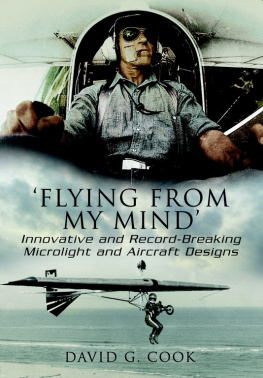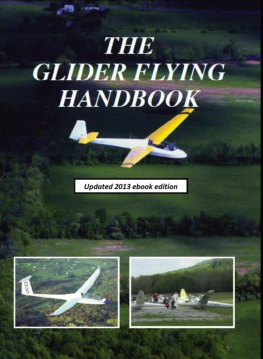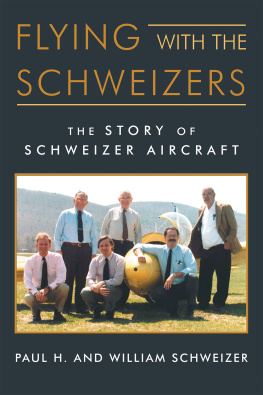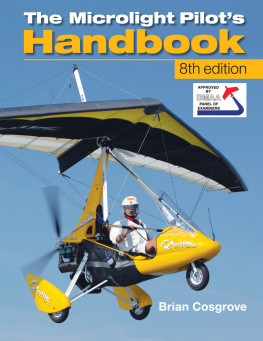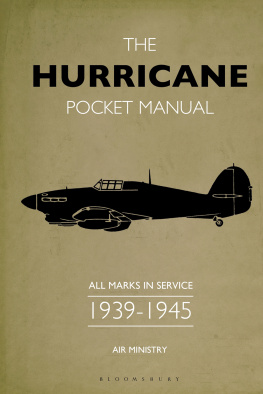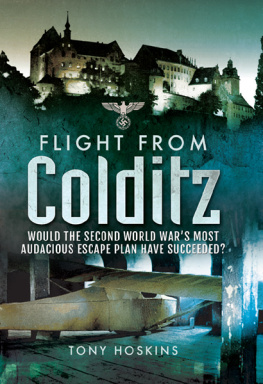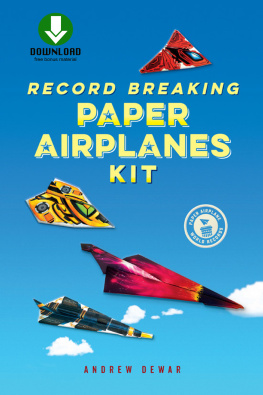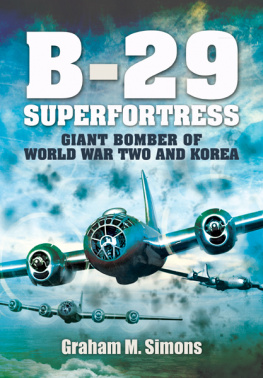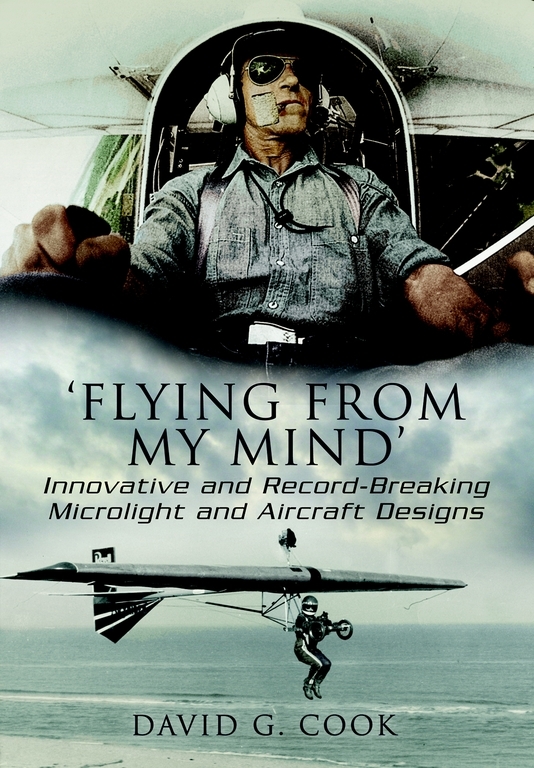M ay I acknowledge the people who have assisted me without wanting anthing in return:
Terry Aspinall, Tony Batten, Dennis Brett, Colin Buck, Peter Clack, Robert Cassidy, David Clarke, Catherine Cook, Jacob Cook, Gary Cook, Chloe Cook, Steven Emmersen, Dr David Foreman, Joan Galway, Rex Garrod, John Gill, Bob Hammond, Tim Hardwick-Smith, Brian Harrison, Mary Higgs, Mike Hilling, George Ireland, Joseph Iszard, Robert Jelliff, Frank Johns, Brian Johnson, Dick Kimmerling, Fiona Luckhurst, Christopher Meynell, Neil Moran, Tim Moy, Dr Martin Pickford, Mike Plewman, Harry Potter, David Raeburn, Chris Reilley, David Robb, Chris Sinclair, Wendy Sinclair, David Southwell, Dr Ian Tait, Chris Tansley, Gerald Townsend, Nigel Townsend, Peter Try-Davies, John Wells, Patrick White, John Wibberley.
Zaka Ullah Bhangoo and Mick Newman tragically killed in a Sky Arrow, 2007.
Epilogue
F ollowing the collapse of CFM, Laron in Texas sold out to Airborne Innovations. This was a company run by a group of people who were also NASA employees at the Johnson Space Centre, Houston. I was asked to visit Houston to help them begin production of the Streak and Shadow design. It was of great interest to me to visit the complex where these NASA employees worked, as it was where the astronauts undertook their training. I was fortunate enough to be able to sit in and peruse the interior of the International Space Station (ISS). The many logical techniques used in this satellite were fascinating to observe.
I was interested to see in the ISS that although there is no up or down when weightless in space, the floor areas were coloured green and ceilings blue. This was for the human brain to acquire some sort of orientation. Numerous other helpful considerations were apparent. I learnt that an automatic landing sequence procedure was available on the Shuttle, whereby the landing could be completely handled by the computer. However, this had never been used by any pilot to date, as they much preferred to be in charge of the manual controls and use their own judgement.
The one and only profitable aspect of NASA was their high-altitude research programme. This was conducted from B57 aircraft, which NASA had acquired after their retirement from the US Air Force. This plane was, in reality, the English Electric Canberra, which years before had been made under licence by Martin Co. as the B57. These planes were now nearing completion of their working life and only two were currently operating, which meant that NASA would need to find a replacement aircraft to take over this research programme.
One of the scientists, the Head of Engineering, really liked my design drawings of the modified StarStreak, which were to have been used to build an aircraft to attempt a class altitude record for Airborne Innovations. If the secret fuel cell could be used, he mused, an unmanned StarStreak with a 50-foot wingspan and high aspect ratio might be a viable alternative to the ageing B57. The fuel cell ran on liquid hydrogen, which produced electricity. This, in turn, ran an electric motor, which powered a conventional propeller. My calculations showed that a StarStreak in this form was a genuine possibility. The liquid hydrogen tank would be formed around the fuselage with 2-inch insulating foam, which would give the aircraft a profile of a rubber dinghy. Without a crew or engine and other normally accepted equipment, the weight when complete would be similar to a normal StarStreak. I did query the weight and size of a 60+ hp electric motor but was assured that modern technology had made these much smaller and lighter than in the past.
I was asked if I would consider working confidentially for NASA for three years, to develop this idea. My reply was emphatically in the negative. I couldnt even contemplate working in that over-hot, steamy climate for that length of time. The US may be geographically awesome but I knew that whatever was said in the interview, I did not want the job on any terms. Anyway, I knew I possessed one trait that would make me totally unacceptable in their eyes and that was my inability and refusal to use a computer. I did all my work with the aid of a slide rule, an unknown device in these days of electronics!
I duly faced the interviewing board of three NASA representatives, who interrogated me at length. Besides the obvious technical questions, there were numerous questions relating to my personality and character, such as What would you like most of all in the world, if given the chance? I replied with reckless abandonment, A chicken suit! I added that it must be yellow and have the beak, comb and big feet. This remark completely confounded the team of experts and gave them plenty of food for thought and proof, I hoped, that I was not suitable for any position in their establishment! Eventually, one of them asked what would I then do with a chicken suit? Revelling in the moment, I said I would race around my garden in England, making the appropriate sound effects! Needless to say, I succeeded in my attempt to fail the interview and returned, thankfully, back home!
Reluctantly, I did have to leave my beloved Suffolk yet again, for in 2001 I was visited by a charming Pakistani, Lieutenant-Colonel Ajab Khan, Deputy Military Secretary to the Chief Executive of the Pakistani Government. He and a friend, Brigadier Zaka Bhangoo, intended to circumnavigate the globe in his StarStreak, to raise funds for a childrens charity. I quickly discovered that Ajab was very knowledgeable about aviation and we were soon deep into conversation. I listened to his fascinating accounts of flying his StarStreak high in the mountains of Pakistan. These are mountains of great heights, K2 being the second highest mountain on Earth. During one journey, the plane was flying in a canyon at 14,000 feet AMSL, the sides of which rose up a further 12,000 feet!
These flights were all part of the preliminary testing for their proposed world adventure.
It was during one nine-hour endurance flight, when Zaka was flying solo, the length of Pakistan, that fuel contamination caused the engine to misfire and he was forced to put down on a dry river bed. The damage inflicted on the aircraft required my technical expertise to repair, hence Ajabs visit to Suffolk.
I had no real desire to undertake the work, but felt I could not refuse my help when the world flight was in the aid of sick and needy children.
I decided to ask my friend Mick Newman if he would consider accompanying me on the visit. He was a yacht designer and builder and had also built and flew his own Shadow, so he would make an ideal accomplice to do the job. He enthusiastically agreed and so, in the early summer of 2002, we set off for Pakistan. Mike and I must have made an odd-looking couple, as we stood before the United Arab Emirates officials at the flight check-in, Heathrow, vainly trying to persuade them that we had been informed that we did not need visas. Mikes appearance in his thirties-style crumpled linen suit, sandals and little round sunglasses obviously didnt help matters. We probably resembled more a pair of spooks rather than acquaintances of the Pakistani Government!
Eventually, with less than ten minutes to spare before the check-in closed, the officials received a fax from the Pakistan Government confirming that our statements were correct and that we could enter the country without the necessary visas.
After this fraught beginning to our travels, the actual journey passed uneventfully and Zaka met us, as planned, at Islamabad Airport. We entered a country on a war footing. Over one million soldiers lined the border with India, which was less than 60 miles away. According to the British press, the area was in a state of great alert, with both Pakistan and India threatening the use of nuclear weapons if the countries came to war and the situation demanded such shows of force. To us, life seemed pretty normal, the only signs of imminent war being the military governments gun posts on most road interceptions.

